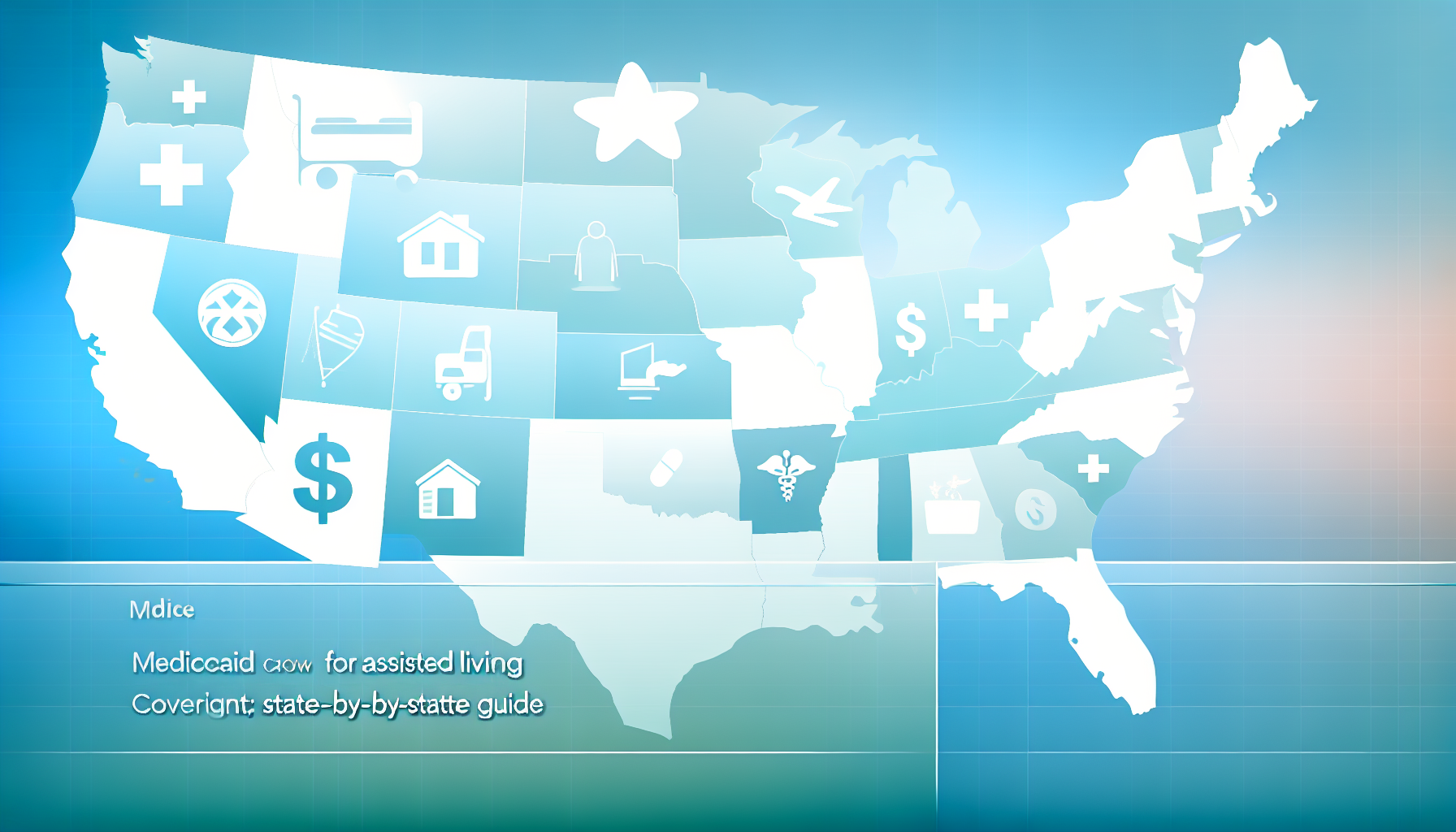 Back to
blogs
Back to
blogs

Medicaid Coverage for Assisted Living: State-by-State Guide.
State-by-state guide to Medicaid coverage for assisted living.
Medicaid coverage for assisted living is an essential concern for millions of American families seeking care options for elderly loved ones. Understanding what Medicaid will cover—and where—is a key step in making informed long-term care choices. This comprehensive, state-specific guide explains how Medicaid interacts with assisted living, including eligibility, covered services, and unique state rules. With coverage varying widely across the U.S., navigating these differences can be challenging. This article provides clarity for families and professionals striving to maximize resources for assisted living.
Medicaid is a federal-state partnership; every state structures coverage for assisted living differently. Key terms include:
However, in most states, room and board is NOT covered by Medicaid—even if care costs are. Families often pay for housing out of pocket or via auxiliary programs.
State waivers, eligibility, and benefits vary. Use this table for a quick reference. See detailed state breakdowns below.
| State | Assisted Living Covered? | Program Name | Age/Requirement | Notes |
|---|---|---|---|---|
| California | Yes | Assisted Living Waiver | 65+, eligible for nursing facility care | Available in selected counties |
| New York | Yes | Assisted Living Program | 21+, eligible for nursing home | Room/board may have non-Medicaid coverage |
| Texas | Yes | Community Based Alternatives | 21+, eligible for nursing facility care | Limited availability |
| Florida | Yes | Statewide Medicaid Managed Care LTC | 18+, care needs | Widespread use of managed care companies |
| Alabama | No | n/a | n/a | No Medicaid package includes assisted living |
| Illinois | Yes | Supported Living Program | 65+ or disabled | Room/board separate |
Jump to detailed state-by-state Medicaid coverage details.
| Pros | Cons | |
|---|---|---|
| Medicaid Assisted Living | - May cover substantial care costs - Extends benefits beyond nursing homes - Reduces out-of-pocket caregiver burden | - Room & board rarely covered - State programs have long waitlists - Complex eligibility & renewal |
| Private Pay/Long-Term Care Insurance | - Greater facility choice - Quicker access/no waitlists | - Very costly for most Americans - Limited by insurance exclusions, caps |
| Feature | Medicaid Coverage for Assisted Living | Alternative (Private Pay/LTC Insurance) |
|---|---|---|
| Monthly Cost | Often $0–$2,000 out-of-pocket (excludes room/board) | $4,500–$7,000 average, all-inclusive |
| Care Level | Personal care, some nursing, depending on state | As contracted with the facility, any level desired |
| State Availability | 49 states & DC offer some program (varies in scope) | Available everywhere if resources exist |
Tip: Some states cap the amount paid for room and board; others let facilities set their own prices. Supplemental Security Income (SSI) or state supplements may help cover housing, but families should always inquire.
Q: What is Medicaid coverage for assisted living?
A: Medicaid coverage for assisted living refers to state Medicaid programs that pay for some or all personal care and support services in an assisted living facility. Services covered vary widely by state and program, but generally include help with daily activities, medication management, and limited health-related tasks. Room and board, however, is rarely covered by Medicaid.
Q: How does it compare to alternatives?
A: Private pay options are more flexible but costly. Long-term care insurance may help, but most people rely on Medicaid if eligible. Medicaid usually offers fewer facility choices and longer waits, but can significantly reduce family financial burden.
Q: What are the typical costs?
A: The median U.S. cost of assisted living is around $4,800 per month (2024). If eligible for Medicaid coverage, families may only have to cover room and board ($900–$2,000/month depending on state/facility).
Q: Is this option right for families?
A: Medicaid assisted living is often the only affordable option for low-income older adults needing support but not skilled nursing. It is best for families who meet eligibility rules and can wait through any program waitlists.
Q: Are any services covered by insurance?
A: Some long-term care insurance plans cover assisted living, often with daily caps. Medicare does not cover assisted living except for short post-hospital stays in skilled nursing. Medicaid is the primary public payer for long-term support services outside of nursing homes.
Below are some state-specific Medicaid coverage highlights. For comprehensive and updated eligibility, consult your state Medicaid website or Area Agency on Aging.
Note: Facility participation, available waivers, and coverage variables are subject to frequent change. Always verify with state authorities for current eligibility and application steps.
Medicaid Coverage for Assisted Living: State-by-State Guide plays a critical role in informed Financing Assisted Living decisions. Use this guide as your gateway to navigating the complex world of Medicaid eligibility, program benefits, and coverage rules in your state. Explore our expert resources for further research or visit the National Institute on Aging for authoritative advice and updates.
Medicaid coverage for assisted living refers to state Medicaid programs and waivers that help pay for personal care and related services in an assisted living facility, though coverage and eligibility differ widely by state.
In most states, Medicaid does not cover the room and board portion of assisted living facility costs. Some states, however, offer supplemental income or support to help pay for these charges.